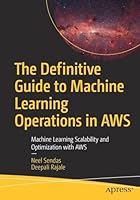
Reliability, Maintainability and Risk, 8th Edition
- Length: 464 pages
- Edition: 8th
- Language: English
- Publisher: Butterworth-Heinemann
- Publication Date: 2011-07-04
- ISBN-10: 008096902X
- ISBN-13: 9780080969022
- Sales Rank: #2384504 (See Top 100 Books)
This book provides engineers with the safety and risk assessment tools and techniques they need to work effectively in any safety or reliability critical environment. These tools are primarily statistical. Where David Smith’s book succeeds is by meeting the needs of an applied audience by setting these tools in the context of the design and operation of safety related processes and systems. Now in its Eighth Edition, this is regarded as the core reference in this field, and the success of its approach is reflected in the popularity of this standard work. It deals with all aspects of reliability, safety-related systems, and the assessment and management of risk in a simple and straightforward way, pre-supposing no prior knowledge and dealing simply and realistically with numerical data by using the minimum of mathematical and technical jargon.
- 8th edition of this core reference for engineers who deal with the design or operation of any safety critical systems, processes or operations
- Answers the question: how can a defect that costs less than $1000 dollars to identify at the process design stage be prevented from escalating to a $100,000 field defect, or a $1m+ catastrophe
- Revised throughout, with new examples, and standards, including must have material on the new edition of global functional safety standard IEC 61508, which launches in 2010
Table of Contents
Part 1. Understanding ReliabilityParameters and Costs
CHAPTER 1. The History of Reliabilityand Safety Technology
Chapter 2. Understanding Terms and Jargon
chapter 3. A Cost-Effective Approach to Quality,Reliability and Safety
Part 2. Interpreting Failure Rates
CHAPTER 4. Realistic Failure Rates andPrediction Confidence
Chapter 5. Interpreting Data and Demonstrating Reliability
Chapter 6. Variable Failure Rates and Probability Plotting
Part 3. Predicting Reliability and Risk
Chapter 7. Basic Reliability Prediction Theory
Chapter 8. Methods of Modeling
Chapter 9. Quantifying the Reliability Models
chapter 10. Risk Assessment (QRA)
Part 4. Achieving Reliabilityand Maintainability
Chapter 11. Design and Assurance Techniques
Chapter 12. Design Review, Test and Reliability Growth
Chapter 13. Field Data Collection and Feedback
Chapter 14. Factors Influencing Down Time
Chapter 15. Predicting and Demonstrating Repair Times
Chapter 16. Quantified Reliability Centered Maintenance
Chapter 17. Systematic Failures, Especially Software
Part 5. Legal, Management and Safety Considerations
Chapter 18. Project Management and Competence
Chapter 19. Contract Clauses and Their Pitfalls
Chapter 20. Product Liability and Safety Legislation
Chapter 21. Major Incident Legislation
Chapter 22. Integrity of Safety-Related Systems
Chapter 23. A Case Study: The Datamet Project
Chapter 24. A case study
Chapter 25. A Case Study: Pressure Control System
Appendix 1. Glossary
Appendix 2. Percentage Points of theChi-Square Distribution
Appendix 3. Microelectronics Failure Rates
Appendix 4. General Failure Rates
Appendix 5. Failure mode percentages
Appendix 6. Human Error Probabilities
Appendix 7. Fatality rates
Appendix 8. Answers to Exercises







